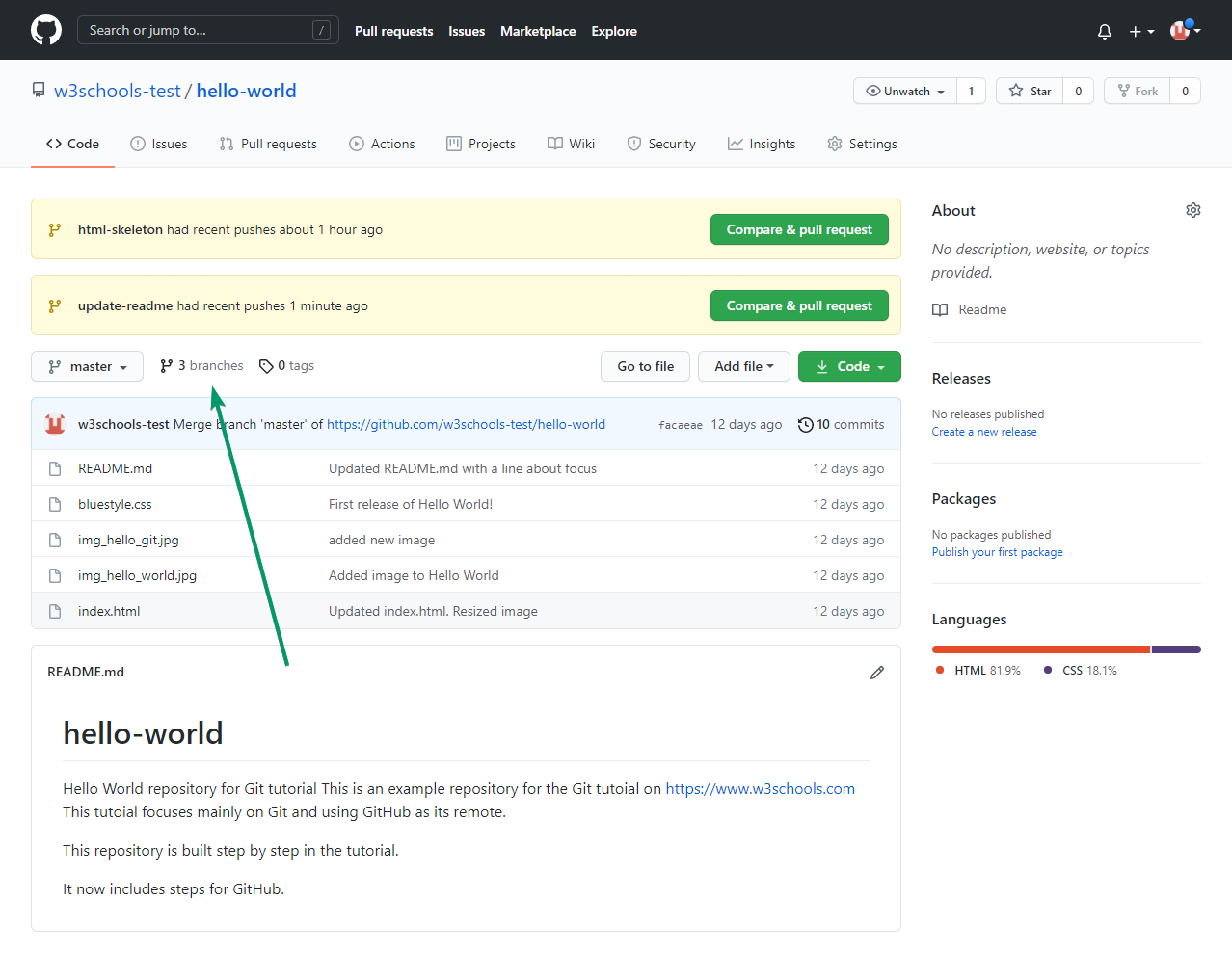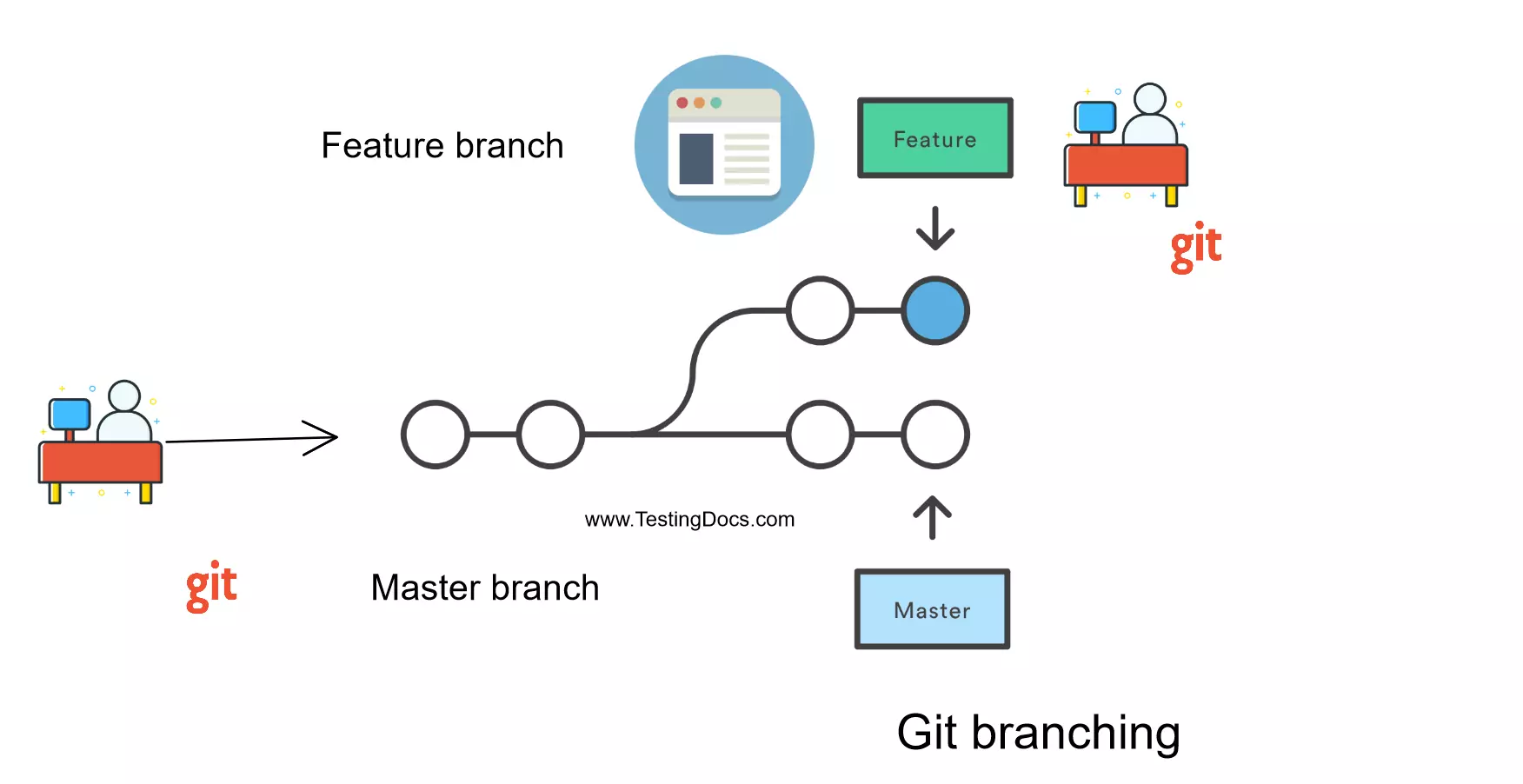

All git does in the master branch is to move the HEAD pointer in the master branch to the latest commit from the “dev” branch. You’ll see the word “Fast-forward” in the above output. Once you are in the master branch, execute git merge dev as shown below to merge the “dev” branch with master.

Once you are done with your development work on the “dev” branch, and validated your changes, you may want to merge the changes to the master branch.įor this, first switch your working branch from dev to master as shown below. Now if you do a git branch -a, you'll see both local and remote "dev" branch. Writing objects: 100% (3/3), 307 bytes | 307.00 KiB/s, done.īranch dev set up to track remote branch dev from origin. The following git push command will create the remote “dev” branch if it doesn’t exists, and push all your local “dev” branch changes to the remote “dev” branch. Push the dev Branch to Remote Git Repository Upstream # git pushįatal: The current branch dev has no upstream branch.ģ. When you do a git push at this stage, it will give the following error message, as we don’t have the “dev” branch in the remote git repository. Even if you are the only person who is working on the “dev” branch, it is still a good idea to push your local changes to remote git repo to keep a remote backup of your changes. This way, you can push all your changes to the remote dev branch, and someone else who is working on the “dev” branch can then checkout the changes. It’s better to push our local “dev” branch to the remote git repository. It’s important to understand that when we initially created our branch, it exists only locally on our local laptop. # git commit -a -m "Fixed email address"ġ file changed, 1 insertion(+), 1 deletion(-) Since we are already inside the dev branch, any commit that we do will happen only on the dev branch. # vim index.htmlĬommit the change to the dev branch. In this example, let us make a change to index.html file. Any change that you do from now on will be only on the “dev” branch. Now that we have a new “dev” branch, start making your changes here. The following git status command indicates that we are currently on the new “dev” branch. # git branch -aĪs you see from the above output, the * is now in front of dev, which indicates the current working branch is dev. Verify that the new branch got created as shown below.

In our case, we don’t have a branch called “dev”.git checkout command will try to checkout the given branch.So, to do our development work, let us create a new local dev branch as shown below. # git branch -aĪs you see from the above output, there is no additional local or remote branch except the master branch.įor more details on git branch command, refer to this: 15 Git Branch Command Examples to Create and Manage Branches The following commands displays all available branches for this repository (both local and remote). Your branch is up-to-date with 'origin/master'. # git clone By default, the current working branch is master branch. In the following example, I’ve cloned demoproject from remote git repository to work on it locally. # Finally, delete dev branch both locally and remoteįor explanation and example output of the above steps, read the rest of the article. Git commit -m "Made the change." index.html Git clone # Create new dev branch, do your work, and commit changes locally
MERGE BRANCH WITH MASTER GIT HUB CODE
For the impatient, here is the code snippet for the above steps: # Clone the git repo:


 0 kommentar(er)
0 kommentar(er)
